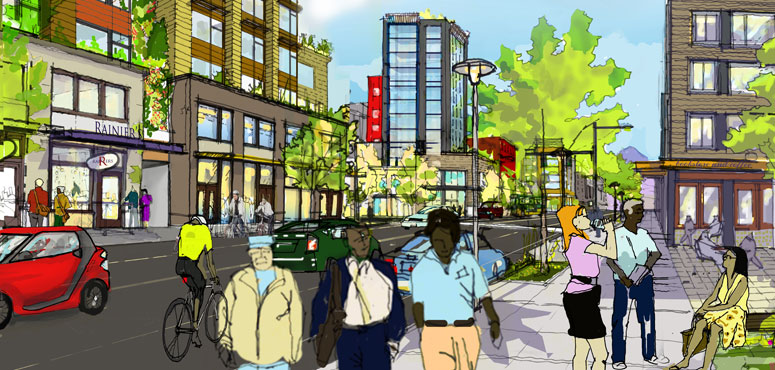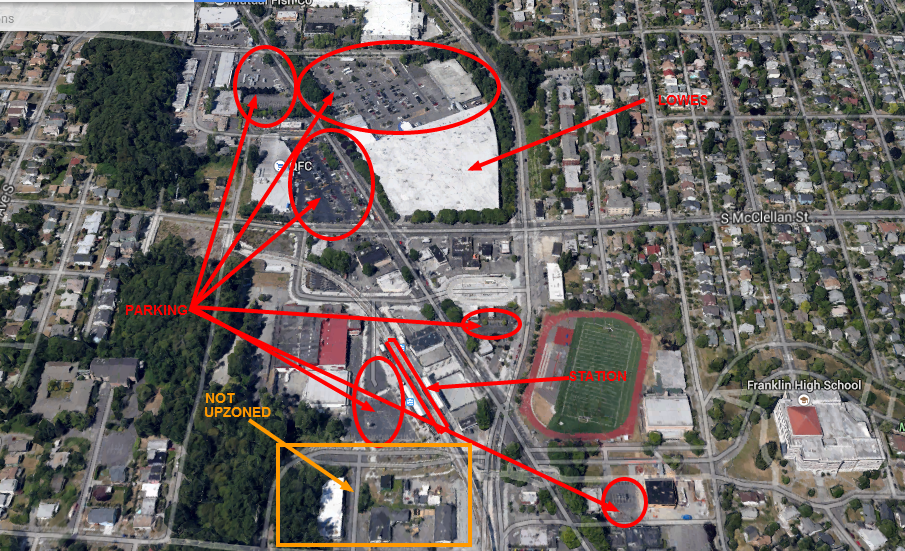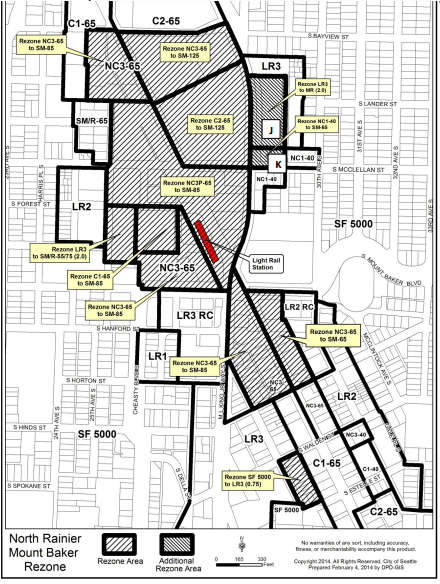
On Tuesday, the Planning, Land Use and Sustainability (PLUS) committee passed through legislation that would rezone around the Mt. Baker light rail station. The most discussed change from this proposed legislation is an increase of height limits to either 65, 85, or 125 feet directly around the station. Though the changes would affect the station overlay district (a fancy way of saying that the area considered accessible by foot to the station) and consequently require street design that is friendly for pedestrians.
Background
It has taken nearly 6 years to get to this point. Most of the area is currently zoned between 55 and 65 feet. The effort aims to create a ‘town center’ around the station that will be walkable and support multi-use commercial activity as well as residential. The current area looks like this:

It is not considered a very walkable area and this is readily apparent from the Google Map above, but if you need convincing, take a drive in Google Street View. In the above image, the area around the station is dominated by parking lots and consists of numerous roads with four or more lanes, and many of those roads don’t make a grid. All of these factors add up to an area that doesn’t encourage walking. Meanwhile, the proposed rezone is as follows:

The Opposition
Those voicing concerns about the rezone process were mostly focused on the issue of height. Council member Bruce Harrell primarily wanted to reduce the increased height limits. Specifically, Harrell’s proposed legislation would have only increased the Lowe’s plot to 85 feet, rather than to 125 feet.To put this in perspective, this is the difference between an 8 and 12 story building.
The dialogue from most residents opposing the change suggests that:
- They support a rezone
- They want to put off the rezone until some other action is taken first
- They think the rezone will destroy jobs in favor of residential housing
It’s not exactly clear how rezoning will destroy jobs in the area. First of all, Lowe’s has a long-term lease on the site, so they’re going nowhere soon. A rezone could enable significant employers to locate in the area, especially if some council members’ idea about a college campus comes to fruition. In the interim, there’s a lot of undeveloped land that would likely be preferred by developers first. Many of the current businesses aren’t exactly big employers and much of the new development will allow new businesses. If this area is not ready for more housing, it’s hard to make the case that any place ever would be ready for housing. The area has excellent transit connections, a lot of underutilized land, a nearby school, is close to downtown, and is in a valley (reducing the visual impact of tall buildings).
Next Steps
The new zoning proposal was passed out of committee with a 4-1 vote. Bruce Harrell was the only dissenter. The full council will consider the legislation on June 23rd. We strongly encourage the council to pass the legislation and specifically include the area in the square orange box in the rezone.

Owen Pickford
Owen is a solutions engineer for a software company. He has an amateur interest in urban policy, focusing on housing. His primary mode is a bicycle but isn't ashamed of riding down the hill and taking the bus back up. Feel free to tweet at him: @pickovven.

